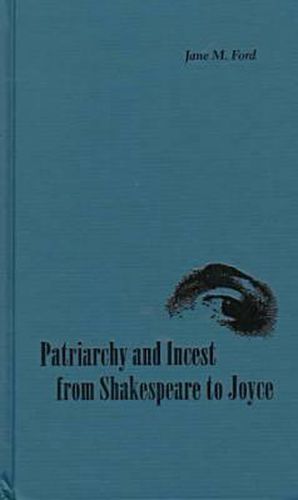Readings Newsletter
Become a Readings Member to make your shopping experience even easier.
Sign in or sign up for free!
You’re not far away from qualifying for FREE standard shipping within Australia
You’ve qualified for FREE standard shipping within Australia
The cart is loading…






Using Shakespeare’s incest plots as a backdrop, Jane Ford traces the incest theme in novels by Charles Dickens, Henry James, Joseph Conrad and James Joyce, exploring in particular the father-daughter-suitor triangle. As Ford demonstrates, three patterns predominate: the father eliminates the suitor and retains the daughter; the father submits to outside authority and relinquishes the daughter; or the father resolves the incest threat by choosing the daughter’s suitor. Ford provides evidence that the fictive characters’ incest conflicts often mirror the writer’s own incest dilemmas, whether subliminal or not, and she points to textual evidence for the occurrence of actual incest in The Golden Bowl and Ulysses . In readings that break with traditional criticism, Ford maintains that each of the five writers wrote final works that seemed to return to a plot of retention of the daughter by the father. Ford’s book offers an amplification of Otto Rank’s seminal work, The Incest Theme in Literature and Legend: Fundamentals of a Psychology of Literary Creation , and extends an important issue in 20th-century psychology into the study of major works of literature written in English.
$9.00 standard shipping within Australia
FREE standard shipping within Australia for orders over $100.00
Express & International shipping calculated at checkout
Using Shakespeare’s incest plots as a backdrop, Jane Ford traces the incest theme in novels by Charles Dickens, Henry James, Joseph Conrad and James Joyce, exploring in particular the father-daughter-suitor triangle. As Ford demonstrates, three patterns predominate: the father eliminates the suitor and retains the daughter; the father submits to outside authority and relinquishes the daughter; or the father resolves the incest threat by choosing the daughter’s suitor. Ford provides evidence that the fictive characters’ incest conflicts often mirror the writer’s own incest dilemmas, whether subliminal or not, and she points to textual evidence for the occurrence of actual incest in The Golden Bowl and Ulysses . In readings that break with traditional criticism, Ford maintains that each of the five writers wrote final works that seemed to return to a plot of retention of the daughter by the father. Ford’s book offers an amplification of Otto Rank’s seminal work, The Incest Theme in Literature and Legend: Fundamentals of a Psychology of Literary Creation , and extends an important issue in 20th-century psychology into the study of major works of literature written in English.